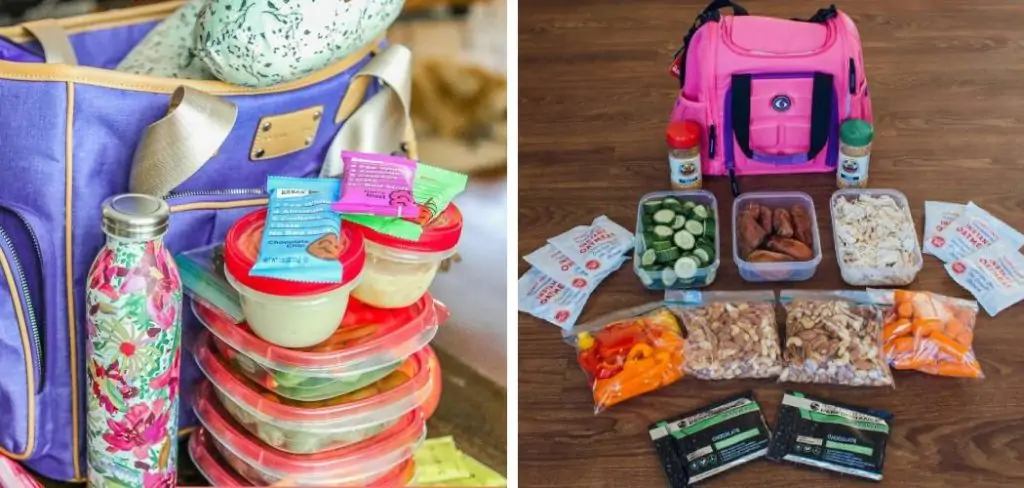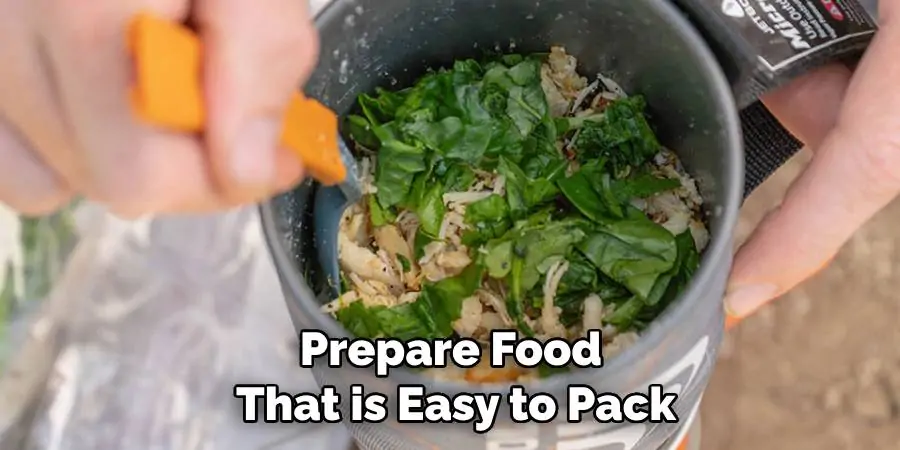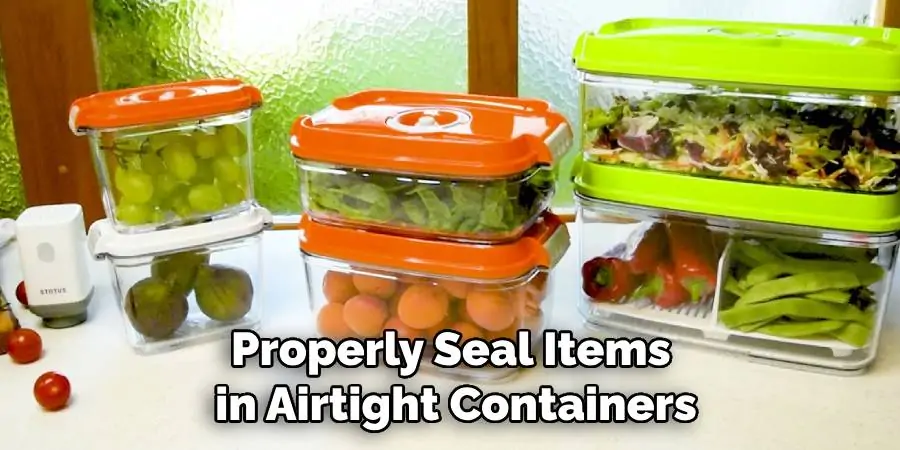Traveling by air can be a hassle, especially when it comes to packing food for the journey. Whether you’re trying to save money or have dietary restrictions, bringing your own food on a flight can make your travel experience much more enjoyable. However, with strict airline regulations and limited space in your carry-on bag, knowing how to pack food for air travel is essential. In this guide, we’ll discuss some tips and tricks for packing food that is both delicious and compliant with airline regulations.

Why Pack Food for Air Travel?
Some people may wonder why bother packing food when they can just purchase snacks and meals on the plane or at the airport. However, there are several reasons why packing your own food is beneficial.
Firstly, purchasing food at the airport or on the plane can be quite expensive. Bringing your own food can save you money, especially if you have a long flight or multiple layovers. Additionally, packing your own food allows you to have control over the quality and type of food you consume. This is particularly important for individuals with dietary restrictions or allergies, as it can be challenging to find suitable options at the airport.
Furthermore, having your own snacks and meals on hand can also prevent hunger and discomfort during a flight. Airline schedules can often be unpredictable, and you may not always have access to food when you need it. By packing your own food, you can ensure that you have something to eat in case of delays or unexpected flight changes.
Top 10 Tips for How to Pack Food for Air Travel
Sticking to your dietary preferences and saving on overpriced airport munchies is a cake walk when you bring your own food on a flight. However, not all foods are created equal for air travel. From security checks to onboard ambiance, there are several factors to consider when filling your carry-on with goodies. Whether you’re a seasoned traveler or preparing for your first flight, follow these ten tips to ensure your in-flight dining experience is both delicious and hassle-free.
1. Understand TSA Regulations
Before you start packing, it’s crucial to be familiar with the Transportation Security Administration (TSA) guidelines. Review the dos and don’ts of liquid, gel, and solid item restrictions. Generally, solid food items (such as sandwiches) are allowed, but keep in mind that sauces, spreads, and liquids must adhere to the 3-1-1 rule (3.4 ounces or less per container, 1 quart-sized clear zip-top bag, 1 bag per passenger). Be especially cautious with soups, dressings, and beverages.
2. Choose Foods with a Low-Odor Profile
The last thing you want is a stink row. Opt for foods that are less likely to offend your neighboring passengers with strong odors. Avoid packing anything pungent like durian or heavily spiced dishes. Instead, go for items with minimal smell such as fresh fruits, unsalted nuts, and sandwiches made with non-odorous ingredients like cheese and turkey.

3. Think Portable and Non-Perishable
Pack foods that won’t spoil or be easily crushed in your carry-on. This means durable items like whole pieces of fruit, granola bars, trail mix, and uncut vegetables. For longer flights, consider homemade snacks like energy bites or protein bars that won’t go soft or stale. Remember, non-perishable doesn’t mean non-nutritious; you can still pack a healthy meal.
4. Maintain Temperature Control for Perishables
If you’re bringing perishables that need to stay cold, make sure to keep them at the appropriate temperature to prevent bacteria growth. Insulated lunch bags with ice packs are a great solution. Just ensure your ice packs are completely frozen to pass through security. Also, be cautious with foods that need to be kept hot; airlines might not appreciate you microwaving on board.
5. Seal Food Properly
Packaging is everything. Use airtight containers or resealable bags to prevent leaks and keep your food fresh. This is especially important for items like salads or dressings that can easily spill. In addition, proper sealing will also prevent odors from escaping and permeating through your bag.
6. Go for Convenience When Preparing Food
When you’re on the go, convenience is key. Prepare food that is easy to pack and eat in-flight. This includes pre-slicing fruits, cutting sandwiches into manageable portions, and avoiding foods that require utensils. The easier it is to eat, the less you’ll have to fiddle around with in cramped airplane spaces.

7. Always Bring Extra Snacks
Flight delays and layovers happen, so it’s best to have a little extra on hand. Bring more snacks than you think you’ll need. Light, nutrient-dense options like popcorn, energy bars, or jerky are ideal for these unforeseen circumstances without filling up your entire carry-on space.
8. Respect International Travel Restrictions
If you’re flying internationally, keep in mind that each country may have its own set of rules regarding food items and agriculture products. Do your research or check the official customs website of your destination to ensure the legality of food you’re planning to bring. Failure to comply with these regulations can lead to confiscation and fines.
9. Be Mindful of Allergies and Dietary Restrictions
Consider the needs of others when you pack your food. If you or someone in your party has a severe allergy, make sure to avoid bringing any items that contain allergens. Additionally, if you have special dietary restrictions, pack enough food for the duration of your travel that complies with your dietary needs.
10. Be Courteous During Mealtime
Finally, be mindful of your fellow travelers during mealtime. Try not to eat loudly or messily, as the space in an airplane seat is confined. Also, if you brought a strong-smelling meal, consider the time and whether other passengers are sleeping or may not be interested in the aroma of your food.
With these tips, you’ll not only enjoy your own culinary masterpieces mid-flight but also make the process smooth for you and those around you. Air travel is a wonderful opportunity to bring a piece of home with you, and with a little thoughtfulness, the sky’s the limit on what you can enjoy while you’re up there. Safe travels and bon appétit!

Additional Tips for a More Enjoyable Flight
- Bring an empty water bottle to refill after security. Staying hydrated while flying is important, and purchasing overpriced bottled water at the airport can add up.
- Pack hand sanitizer or wet wipes in case there are no sinks available for hand-washing before eating.
- If you’re traveling with children, pack snacks that are easy for them to eat and won’t cause a mess. This will make the flight more enjoyable for everyone.
- Consider bringing a small travel-sized salt and pepper shaker or your favorite spices to add some flavor to in-flight meals. Just make sure they are properly sealed and adhere to TSA guidelines.
- If you’re planning on purchasing food at the airport, check online menus beforehand to see if there are any healthy options available. This will save you time and potentially unhealthy snacking choices.
- For longer flights, consider packing a small travel-sized toothbrush and toothpaste to freshen up before landing. Your seatmates will thank you!
- Don’t forget to bring some snacks for the ride home as well. You never know when flight delays or cancellations may occur, leaving you hungry and stranded at the airport. Overall, being prepared with nutritious and convenient food options during air travel can make a world of difference in your overall flight experience.
Frequently Asked Questions
Which Food Items Are Not Allowed in Flights?
Some common food items that are not allowed in flights include liquids and gels over 3.4 ounces, ice packs that are not frozen solid, and foods with strong odors or that could cause a mess. It’s important to check with your specific airline for their regulations and restrictions on food items.
Can You Pack Your Own Food on a Plane?
Yes, you can pack your own food on a plane. However, the food must comply with TSA guidelines and not be considered a security threat. It’s best to pack non-perishable items that are properly sealed and won’t cause a mess or strong odor.
How Do You Pack Food in a Suitcase?

When packing food in a suitcase, it’s important to properly seal items in airtight containers or resealable bags to prevent leaks and odors. It’s also best to pack non-perishable items that won’t spoil if not refrigerated. Additionally, make sure to leave enough space for any fragile food items and avoid placing heavy objects on top of them. Overall, follow the guidelines and restrictions of your airline to ensure a smooth traveling experience with your packed food.
Conclusion
In this guide, we have discussed how to pack food for air travel to ensure a comfortable and enjoyable experience. From choosing the right foods to proper packaging and being mindful of regulations, these tips will help you plan and prepare for your next flight with ease. Remember to always consider the needs of others and be courteous during mealtime. With a little thoughtfulness, you can bring a piece of home with you on your travels and make the most out of your in-flight meals.
